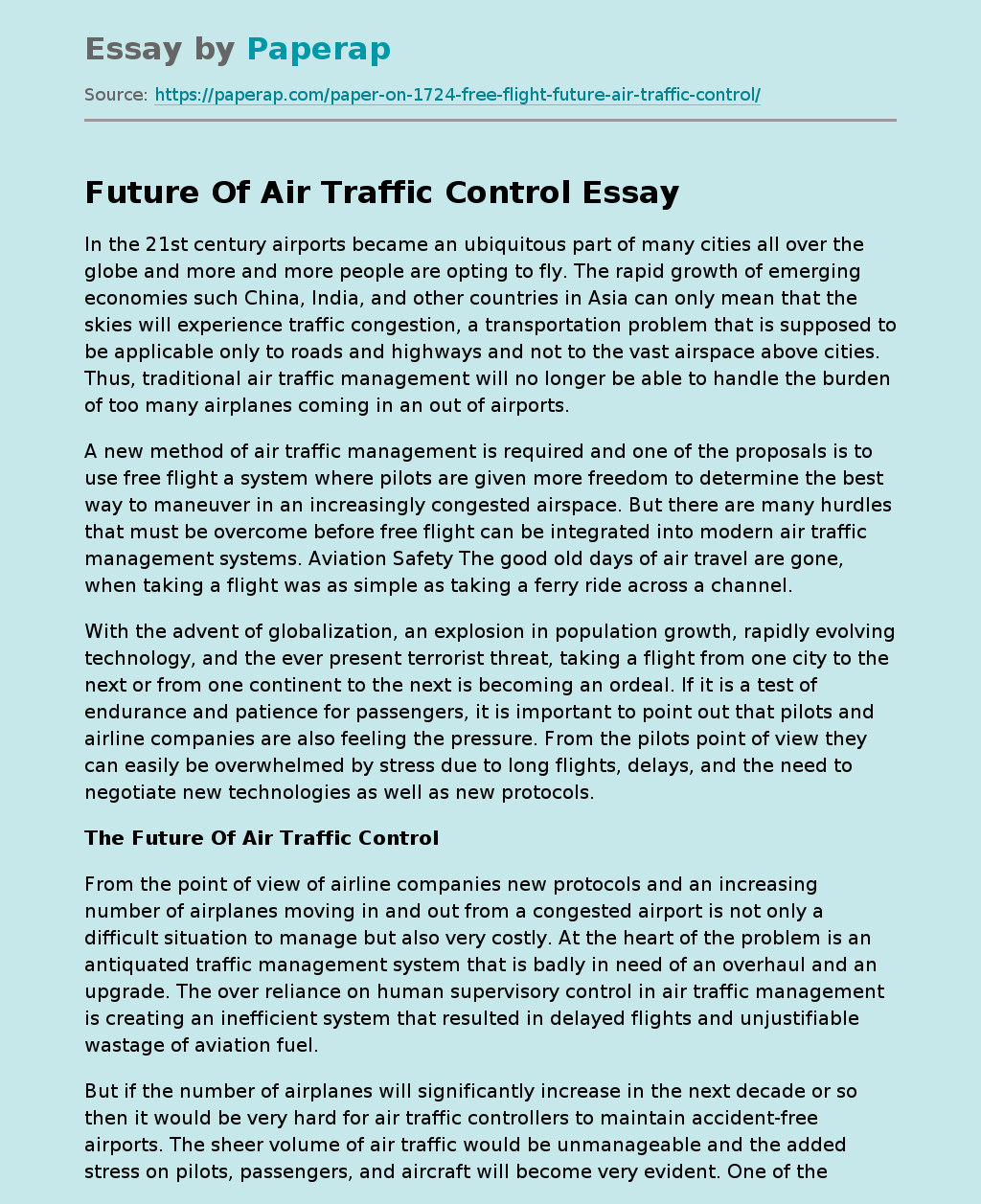In the 21st century airports became an ubiquitous part of many cities all over the globe and more and more people are opting to fly. The rapid growth of emerging economies such China, India, and other countries in Asia can only mean that the skies will experience traffic congestion, a transportation problem that is supposed to be applicable only to roads and highways and not to the vast airspace above cities. Thus, traditional air traffic management will no longer be able to handle the burden of too many airplanes coming in an out of airports.
A new method of air traffic management is required and one of the proposals is to use free flight a system where pilots are given more freedom to determine the best way to maneuver in an increasingly congested airspace. But there are many hurdles that must be overcome before free flight can be integrated into modern air traffic management systems. Aviation Safety The good old days of air travel are gone, when taking a flight was as simple as taking a ferry ride across a channel.
With the advent of globalization, an explosion in population growth, rapidly evolving technology, and the ever present terrorist threat, taking a flight from one city to the next or from one continent to the next is becoming an ordeal. If it is a test of endurance and patience for passengers, it is important to point out that pilots and airline companies are also feeling the pressure. From the pilots point of view they can easily be overwhelmed by stress due to long flights, delays, and the need to negotiate new technologies as well as new protocols.
The Future Of Air Traffic Control
From the point of view of airline companies new protocols and an increasing number of airplanes moving in and out from a congested airport is not only a difficult situation to manage but also very costly. At the heart of the problem is an antiquated traffic management system that is badly in need of an overhaul and an upgrade. The over reliance on human supervisory control in air traffic management is creating an inefficient system that resulted in delayed flights and unjustifiable wastage of aviation fuel.
But if the number of airplanes will significantly increase in the next decade or so then it would be very hard for air traffic controllers to maintain accident-free airports. The sheer volume of air traffic would be unmanageable and the added stress on pilots, passengers, and aircraft will become very evident. One of the proposed solutions is to use a free flight system. The need for free flight can be understood using the following information: “Currently, U. S.
commercial aircraft do not fly point to point but, rather, follow segmented jet routes and en route airspace (the ‘long haul’ airspace starting about 40 miles – 64 km – from airports). Unfortunately, jet routes add unnecessary travel distance and time” (Knecht, 2008). The consequence of this type of traffic management is not hard to understand. Aside from potential delays and other inefficiencies, the inability of pilots to quickly land their aircraft will increase the probability of accidents as airspaces become congested with planes encircling airports.
A free flight system uses technology to provide digital information to pilots so they will be freed from auditory messages coming from air traffic controllers. Based on what is going on in many sectors of society and most especially in the military, the future of the aviation safety is moving towards “unmanned systems” or the need for more automation with improvements in technology and therefore requiring less direct human inputs through manual control (Cummings & Guerlain, 2007).
Aside from the speed and efficiency of establishing a flight pattern to land the aircraft as soon as possible, free flight can also contribute in achieving improved aviation safety. This is because “en route conflicts” can be minimized. According to one report, “En route ‘conflicts’ are defined as any two aircraft approaching within 5 nautical miles or 9. 3 km of each other (Knecht, 2008). If the number of airplanes will increase as predicted then “en route conflicts” will also increase as more and more planes will have to navigate a more congested airspace.
Future Of Air Traffic Control. (2019, Dec 05). Retrieved from https://paperap.com/paper-on-1724-free-flight-future-air-traffic-control/

